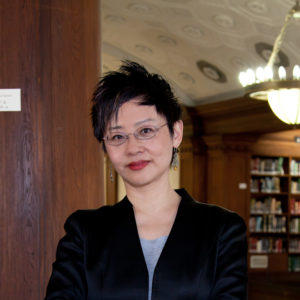Prof. Dr. Lydia Liu

Fellow in the project "Conceptions of World Order and Their Social Carrier Groups“ (May 2025 - July 2025)
Short Biography
Lydia H. Liu is the Wun Tsun Tam Professor in the Humanities and former Director of the Institute for Comparative Literature and Society at Columbia University. She has published extensively on critical translation theory, Chinese and comparative literature, digital media, political thought, and the philosophy of language. Her representative books include The Freudian Robot: Digital Media and the Future of the Unconscious (2010), The Clash of Empires: The Invention of China in Modern World Making (2004), The Birth of Chinese Feminism: Essential Texts in Transnational Theory (co-edited, 2013) as well as Translingual Practice: Literature, National Culture, and Translated Moderinty (1995). Her new book Global Language Justice (co-edited with Anupama Rao and Charlotte Silverman) was published by Columbia University Press in 2023. She was a Guggenheim Fellow and more recently a member of the Institute for Advance Study in Princeton.
Project
The Machine Interlingua: How Philosophy Migrated to the AI LabI am finishing a book-length study of the Cambridge Language Research Unit (CLRU) with a focus on the philosophical work of its founder Margaret Masterman (aka Margaret Masterman Braithwaite, 1910–1986). Masterman was a leading figure in early machine translation (MT) after World War II. As one of Wittgenstein’s students, she was also the first AI practitioner to introduce Wittgenstein’s philosophy to computational linguistics. Long before there were large language models (LLMs) in AI, Masterman and her team had developed the machine interlingua, mechanical thesauri, semantic algorithms, and numerous other procedures to perform word-sense disambiguation, machine translation, computerized haiku poetry, etc., all of which greatly impacted the direction of subsequent AI innovations.
The CLRU’s early machine modeling of a philosophical distinction between ideograph and logos in the 1950s-1960s was profoundly indebted to Masterman’s study of classical Chinese under the guidance of sinologist Gustav Haloun (1898-1951). Her interrogation of the logos and its relation to the ideograph eventually led to the invention of the ideographic head which she derived from the zi or the written Chinese character—rather than words -- as the basic unit for computation. This has since evolved into the computable unit of semantic tokens used in today’s machine learning. CLRU attempted to resolve the main difficulties of machine translation by reckoning with, first and foremost, Western metaphysics and its logocentric understanding of language. Their engagement with Wittgenstein’s picture theory of language succeeded in clearing the philosophical ground for subsequent AI explorations, pushing them toward what has since become commonplace in supervised and unsupervised machine learning: semantic vector space, conceptual graphs, word-sense disambiguation, and so on. This is a story of AI and Chinese script that must be told, and my book is intended to tell the story so that the origins of AI and its philosophical foundation will no longer be obscured by the all too familiar narrative of AI fathers, god fathers, and other such mythic figures.
